Whale Trail Stops on the Hwy 1 Discovery Route
By Linda Ballou, NABBW’s Adventure Travel Associate
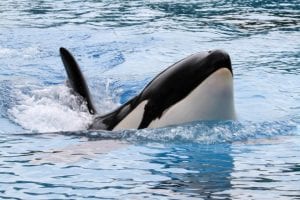 When Donna Sandstrom got involved with transporting Springer, a stranded orca in the Seattle harbor to his home waters in Vancouver, she didn’t know it would change her life. She became so engaged in the struggle of imperiled marine mammals she turned her energies to preserving them for future generations.
When Donna Sandstrom got involved with transporting Springer, a stranded orca in the Seattle harbor to his home waters in Vancouver, she didn’t know it would change her life. She became so engaged in the struggle of imperiled marine mammals she turned her energies to preserving them for future generations.
She is the driving force behind the creation of the Whale Trail, that presently extends from Canada to California.
It is her hope that identifying and marking the best places to spot the whales, dolphins and other marine life as they migrate along the coast will generate excitement for sea creatures from land-based viewing platforms.
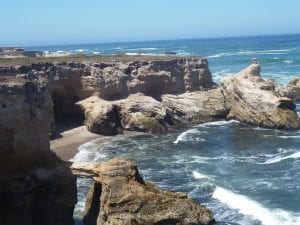 Whales make the longest migrations of any mammal on earth from chill waters of Alaska to Baja California they rely on ancient knowledge to guide through treacherous seas.
Whales make the longest migrations of any mammal on earth from chill waters of Alaska to Baja California they rely on ancient knowledge to guide through treacherous seas.
Today their challenges are greater than ever from congested, noisy shipping lanes, to pollutants and plastic in our oceans.
The creation of the Whale Trail with over sixty designated viewing sites on the Pacific Coast is an attempt to bring greater sensitivity to the needs of the largest, and oldest creatures on our planet to survive.
Six viewing sites along the Highway 1 Discovery Route have been identified on the Central Coast of California:
- In San Simeon
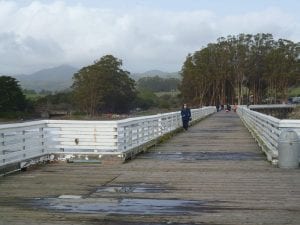
- Moonstone Beach in Cambria
- The pier at Cayucos
- The bluff trail in Montana de Oro State Park
- The Avila Pier, and
- The Oceano Dunes Overlook at Grand Avenue
At each site there are placards displaying what types of marine mammal’s people should expect to see from that vantage point and signs that will help you spot whale spouts. However, whales are just a part of the marine life that need our protection.
Shorebirds circling indicate a shoal of fish that will soon bring seals, sea lions and other sea creatures to the surface. Spouts, or blows of whales exhaling water’s surface often look like puffs of smoke. They shape and size of the blow is distinctive to each species.
Gray whales coming through in January and February have a double blow-hole and their spout is heart shaped. Humpback whales that migrate along the California Coast in April in May have tall, column-shaped blows.
All cetaceans have identifying dorsal fins. You will find more information on how to spot and identify marine mammals on The WhaleTrail.org
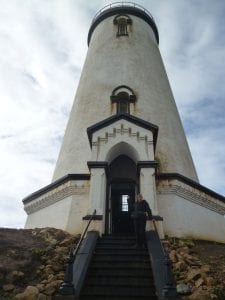 I visited the Piadras Lighthouse in San Simeon, which sits on a lonely peninsula jutting out in to rough seas crashing over sea stacks. Docents led tours through the manicured grounds garner good viewing spots for a variety of marine life, including the whales during migrations. A fluffy otter was floating on his back oblivious to crashing waves while Elephant Seals lay sprawled on the shore.
I visited the Piadras Lighthouse in San Simeon, which sits on a lonely peninsula jutting out in to rough seas crashing over sea stacks. Docents led tours through the manicured grounds garner good viewing spots for a variety of marine life, including the whales during migrations. A fluffy otter was floating on his back oblivious to crashing waves while Elephant Seals lay sprawled on the shore.
The pier in San Simeon Bay on the Whale Trail is also the home of the Coastal Discovery Center.
Docents love to take kids to the end of the pier and drop a line in the water to take a sample then place what they collect under a microscope to lets the kids see the squiggling life forms in one drop of water. This is an effort is to encourage stewardship of our precious oceans and the creatures who live in them.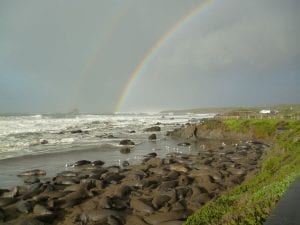
Locals want to show off their gorgeous region and love to share the trails and their knowledge of flora and fauna at no charge, but they are encouraging Stewardship Travel. You can pick up a Stewardship Traveler Clean-Up Kit and appreciation Tote Bags at Avila Beach, Cayucos and Cambria Visitor Centers.
My favorite stop on the Whale Trail is the pier at Cayucos. Not just because of the fun walk to tide pools across windswept bluffs to the north, and the opportunity to see migrating whales and playful sea otters, but because it is home to Schooners Restaurant.
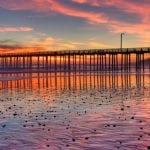 Oysters Rockefeller starter followed by saucy seafood pasta accompanied with a crisp chardonnay and a front row seat for the sunset is the perfect end to a day exploring the Whale Trail one the Central Coast.
Oysters Rockefeller starter followed by saucy seafood pasta accompanied with a crisp chardonnay and a front row seat for the sunset is the perfect end to a day exploring the Whale Trail one the Central Coast.
Donna has pulled together a host of non-profits to fund the goal of creating awareness that will generate land-based actions that will promote the well-being of all of the magnificent creatures that live in our oceans. She is working tirelessly to identify the best viewing sites with educational plaques all the way from Alaska to Baja California.
Go to Whale Trail’s “Get Involved” page to learn more and show her your support.
- Highway 1 Discovery Route http://highway1discoveryroute.com/
- Whale Trail http://thewhaletrail.org/
Linda Ballou says her mission is to experience as many beautiful places on our planet as she can, before they are no more. “Travel tales relating my experiences while kayaking, horseback riding, sailing, birding and hiking about the globe have appeared in numerous national magazines.”
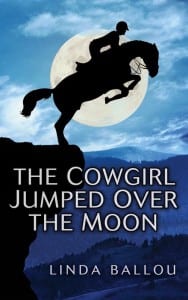 I had a great deal of fun collecting travel stories, and profiles of people I have met in “naturally high places” for my book, Lost Angel Walkabout-One Traveler’s Tales, while my latest book, The Cowgirl Who Jumped Over the Moon, deals with horses, World Cup racing, and the beauty of California’s High Sierras.
I had a great deal of fun collecting travel stories, and profiles of people I have met in “naturally high places” for my book, Lost Angel Walkabout-One Traveler’s Tales, while my latest book, The Cowgirl Who Jumped Over the Moon, deals with horses, World Cup racing, and the beauty of California’s High Sierras.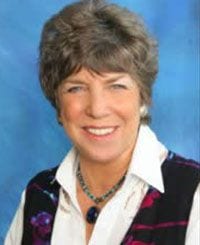
For a complete bio as well as published on-line clips with photos go to my website LindaBallouAuthor.com. Your reward, aside from learning about me and my work, will be to discover the secret to youth! Follow my blog or friend me on Facebook to keep up with my latest adventures.”
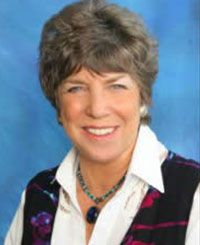
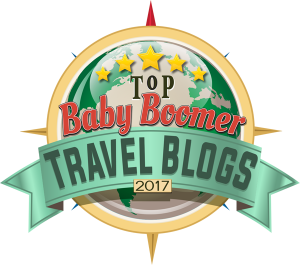 Linda's mission is to experience as many beautiful places on our planet as she can before they are no more. Travel tales relating her experiences while kayaking, horseback riding, sailing, birding and hiking about the globe have appeared in numerous national magazines. She had great fun collecting travel stories, and profiles of people she met in “naturally high places” for her book, Lost Angel Walkabout-One Traveler’s Tales. Her latest book Lost Angel Unleashed is the third book in her Lost Angel Trilogy
Linda's mission is to experience as many beautiful places on our planet as she can before they are no more. Travel tales relating her experiences while kayaking, horseback riding, sailing, birding and hiking about the globe have appeared in numerous national magazines. She had great fun collecting travel stories, and profiles of people she met in “naturally high places” for her book, Lost Angel Walkabout-One Traveler’s Tales. Her latest book Lost Angel Unleashed is the third book in her Lost Angel Trilogy
